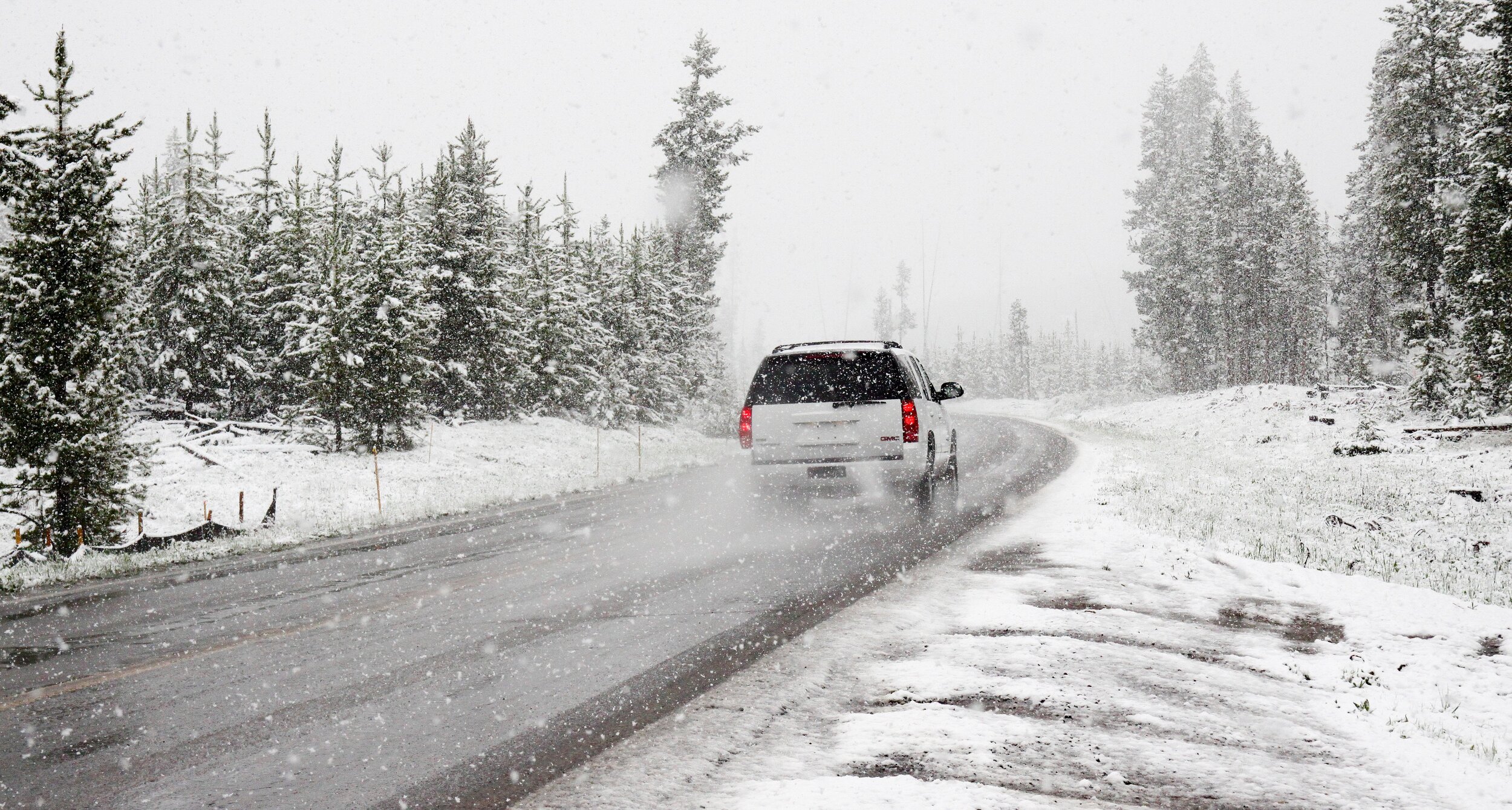Rock Salt Can Make Winter Rough on Plants and Trees
Road covered in rock salt during a snow storm.
Damage from Rock Salt Can Be Lasting
There’s no question that road salt saves human lives on snowy and icy roads, but the hidden damage it does to plants, soil and trees can be deadly.
Within the U.S. it is estimated that 22 million tons of deicing solution is applied annually to impervious surfaces – roadways, walkways and parking areas.
“Deicing solutions make travel easier for drivers and pedestrians, but they can wreck havoc on vegetation and soil,” says Joel Koci, associate Extension specialist in urban forestry at the Virginia Cooperative Extension at Virginia State University.
The most commonly used compound is sodium chloride (NaCl), which is normally applied after a weather event. It is the least costly, most available compound for treating impervious surfaces. Brine is another form of sodium chloride, which is applied before a weather event. Both of these methods help keep roadways and walkways safer. However, they have adverse effects on adjacent vegetation and soils, especially along waterways.
Sodium salt toxicity to plants is not new, Koci says. In earlier times, warring countries used sodium chloride to poison their opponents’ crops. It was lethal then, but today it creates even more environmental concerns because more of the chemical is used, as urban populations increase. The more people, the more impervious surfaces that need to be treated during snow and ice storms.
The salt spray can cause aerial and root damage along with acute (immediate) and /or chronic damage. Acute damage will show itself, the same season, as burnt (browning) patches on plants and vegetation and dried out buds on deciduous trees, resulting in stunted growth and likely infestation from pathogens. The chronic effects are more difficult to see because they involve soil and roots, and, therefore, show their effects later in the season.
To reduce the adverse effects of deicing solutions some preventative measures can be taken, Koci says.
One way to reduce the application of deicing material is to remove the snow first down to the paved surface. By removing the snow first less deicing solution is needed. Then use a grit material, such as sand, to increase traction. The sand can reduce the flow of pollutants into the waterways and into plant root zones. At the end of the winter the sand can be reclaimed and reused.
Another preventive measure is to use non-sodium products, Koci says. These include calcium chloride and calcium magnesium acetate (CMA). These materials are more costly than sodium chloride, but when the reduced damage to plants is considered, they may be more economical. Other preventive measures include:
Using salt-tolerant plants near impervious areas
Increasing permeability of the soil to increase plant health and root depth
Flushing soil with water to dilute the concentration of salts
Erecting temporary barriers to reduce spray of salt into planting beds from traffic
These methods may seem cumbersome, but saving the installed plants is more economical and less labor intensive in the long run. In our “built environment,” Koci notes, we need to understand how to maintain our plants so they can continue to supply the many and varied benefits they are capable of.

